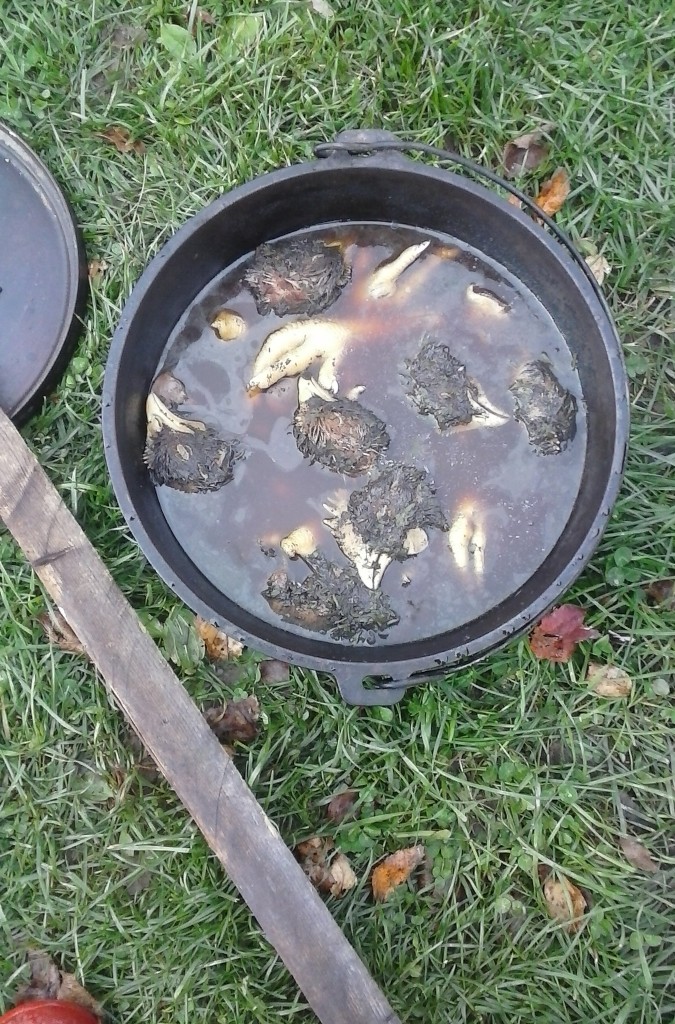Just in case anyone thinks the money and fame may go to one’s head, I’m posting my earnings from CD Baby. 😉 Some of the amounts are fascinating. As you can see, artists are brutalized by the pricing of their works on Google Music and iTunes, which make a big difference.
Support an artist through their own website, and you’ll generally help them be able to make more music. <3 (Studio time is expensive, and it’s hard to do that when iTunes pays half of what you charge on your own website.)
Of course, I am grateful for anyone who has purchased my music, or even listened to it in a streaming venue, as the pennies literally add up, but this might show a little what it’s like to be selling music in the modern, digital age.
$10.92 for album download of Aneleda Falconbridge: I Am of the North
$10.92 for album download of Aneleda Falconbridge: I Am of the North
$10.92 for album download of Aneleda Falconbridge: I Am of the North
$6.37 for DIGITAL DISTRIBUTION SALES through Google Music Store
$6.37 for DIGITAL DISTRIBUTION SALES through Google Music Store
$6.37 for DIGITAL DISTRIBUTION SALES through Apple iTunes
$5.92 for DIGITAL DISTRIBUTION SALES through Amazon MP3
$2.55 for DIGITAL DISTRIBUTION SALES through Apple iTunes
$1.86 for DIGITAL DISTRIBUTION SALES through iTunes-Canada
$0.64 for DIGITAL DISTRIBUTION SALES through Apple iTunes
$0.64 for DIGITAL DISTRIBUTION SALES through Apple iTunes
$0.47 for DIGITAL DISTRIBUTION SALES through Spotify
$0.38 for DIGITAL DISTRIBUTION SALES through Spotify
$0.30 for DIGITAL DISTRIBUTION SALES through Spotify
$0.24 for DIGITAL DISTRIBUTION SALES through Spotify
$0.18 for DIGITAL DISTRIBUTION SALES through Google Music Store
$0.13 for DIGITAL DISTRIBUTION SALES through Google Music Store
$0.11 for DIGITAL DISTRIBUTION SALES through Spotify
$0.09 for DIGITAL DISTRIBUTION SALES through Spotify
$0.08 for DIGITAL DISTRIBUTION SALES through Spotify
$0.08 for DIGITAL DISTRIBUTION SALES through Spotify
$0.08 for DIGITAL DISTRIBUTION SALES through Spotify
$0.08 for DIGITAL DISTRIBUTION SALES through Google Locker
$0.07 for DIGITAL DISTRIBUTION SALES through Spotify
$0.07 for DIGITAL DISTRIBUTION SALES through YouTube Music
$0.06 for DIGITAL DISTRIBUTION SALES through Spotify
$0.06 for DIGITAL DISTRIBUTION SALES through Spotify
$0.05 for DIGITAL DISTRIBUTION SALES through Spotify
$0.05 for DIGITAL DISTRIBUTION SALES through Spotify
$0.05 for DIGITAL DISTRIBUTION SALES through Spotify
$0.05 for DIGITAL DISTRIBUTION SALES through Spotify
$0.05 for DIGITAL DISTRIBUTION SALES through Spotify
$0.05 for DIGITAL DISTRIBUTION SALES through Spotify
$0.05 for DIGITAL DISTRIBUTION SALES through Spotify
$0.04 for DIGITAL DISTRIBUTION SALES through iTunes Match – Americas
$0.04 for DIGITAL DISTRIBUTION SALES through Spotify
$0.04 for DIGITAL DISTRIBUTION SALES through Spotify
$0.04 for DIGITAL DISTRIBUTION SALES through Spotify
$0.04 for DIGITAL DISTRIBUTION SALES through Spotify
$0.04 for DIGITAL DISTRIBUTION SALES through iTunes Match – Americas
$0.04 for DIGITAL DISTRIBUTION SALES through Spotify
$0.03 for DIGITAL DISTRIBUTION SALES through Spotify
$0.03 for DIGITAL DISTRIBUTION SALES through Spotify
$0.03 for DIGITAL DISTRIBUTION SALES through Spotify
$0.03 for DIGITAL DISTRIBUTION SALES through Spotify
$0.03 for DIGITAL DISTRIBUTION SALES through Spotify
$0.03 for DIGITAL DISTRIBUTION SALES through Google Locker
$0.03 for DIGITAL DISTRIBUTION SALES through Spotify
$0.02 for DIGITAL DISTRIBUTION SALES through Google Music Store
$0.02 for DIGITAL DISTRIBUTION SALES through Spotify
$0.02 for DIGITAL DISTRIBUTION SALES through Spotify
$0.02 for DIGITAL DISTRIBUTION SALES through Spotify
$0.02 for DIGITAL DISTRIBUTION SALES through Spotify
$0.02 for DIGITAL DISTRIBUTION SALES through Spotify
$0.02 for DIGITAL DISTRIBUTION SALES through Google Locker
$0.02 for DIGITAL DISTRIBUTION SALES through Spotify
$0.02 for DIGITAL DISTRIBUTION SALES through Spotify
$0.02 for DIGITAL DISTRIBUTION SALES through Spotify
$0.02 for DIGITAL DISTRIBUTION SALES through Spotify
$0.02 for DIGITAL DISTRIBUTION SALES through Spotify
$0.02 for DIGITAL DISTRIBUTION SALES through Spotify
$0.02 for DIGITAL DISTRIBUTION SALES through Spotify
$0.02 for DIGITAL DISTRIBUTION SALES through Spotify
$0.02 for DIGITAL DISTRIBUTION SALES through Spotify
$0.01 for DIGITAL DISTRIBUTION SALES through Spotify
$0.01 for DIGITAL DISTRIBUTION SALES through Spotify
$0.01 for DIGITAL DISTRIBUTION SALES through Spotify
$0.01 for DIGITAL DISTRIBUTION SALES through Spotify
$0.01 for DIGITAL DISTRIBUTION SALES through Spotify
$0.01 for DIGITAL DISTRIBUTION SALES through Spotify
$0.01 for DIGITAL DISTRIBUTION SALES through Spotify
$0.01 for DIGITAL DISTRIBUTION SALES through Spotify
$0.01 for DIGITAL DISTRIBUTION SALES through Spotify
$0.01 for DIGITAL DISTRIBUTION SALES through iTunes Match – Americas
$0.01 for DIGITAL DISTRIBUTION SALES through iTunes Match – Americas
$0.01 for DIGITAL DISTRIBUTION SALES through Spotify
$0.01 for DIGITAL DISTRIBUTION SALES through Spotify
$0.01 for DIGITAL DISTRIBUTION SALES through Spotify
$0.01 for DIGITAL DISTRIBUTION SALES through iTunes Match – Americas
$0.01 for DIGITAL DISTRIBUTION SALES through iTunes Match – Americas
$0.01 for DIGITAL DISTRIBUTION SALES through Spotify
$0.01 for DIGITAL DISTRIBUTION SALES through Google Music Store
$0.01 for DIGITAL DISTRIBUTION SALES through Google Music Store
$0.01 for DIGITAL DISTRIBUTION SALES through Google Music Store
$0.01 for DIGITAL DISTRIBUTION SALES through Spotify
$0.01 for DIGITAL DISTRIBUTION SALES through Spotify
$0.01 for DIGITAL DISTRIBUTION SALES through iTunes – Apple Music – Europe


























